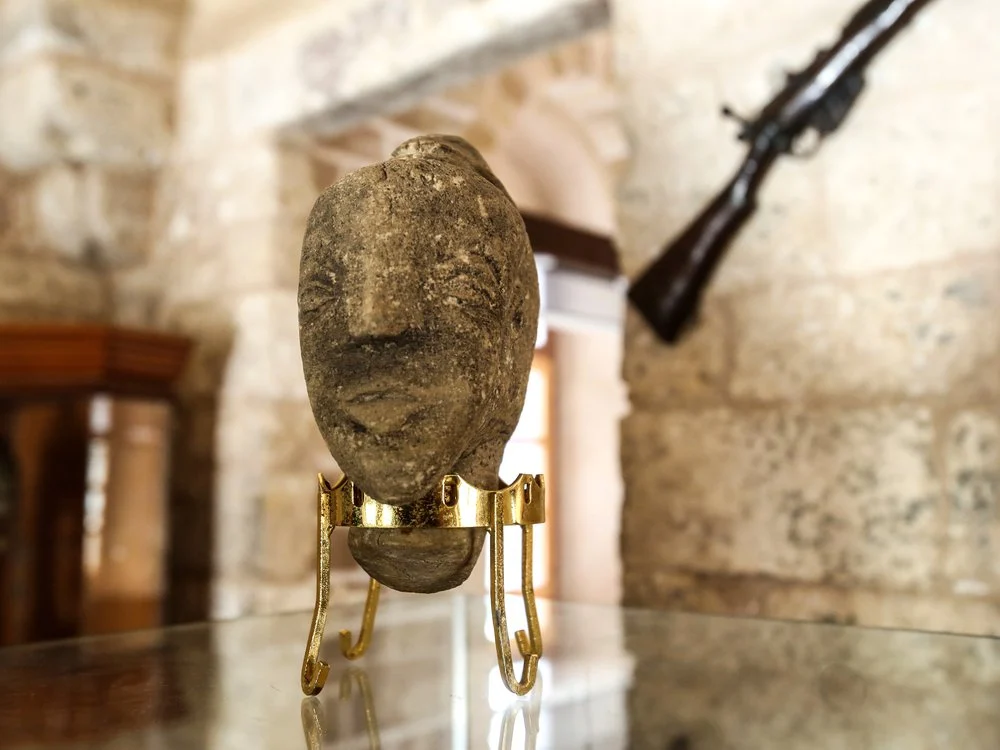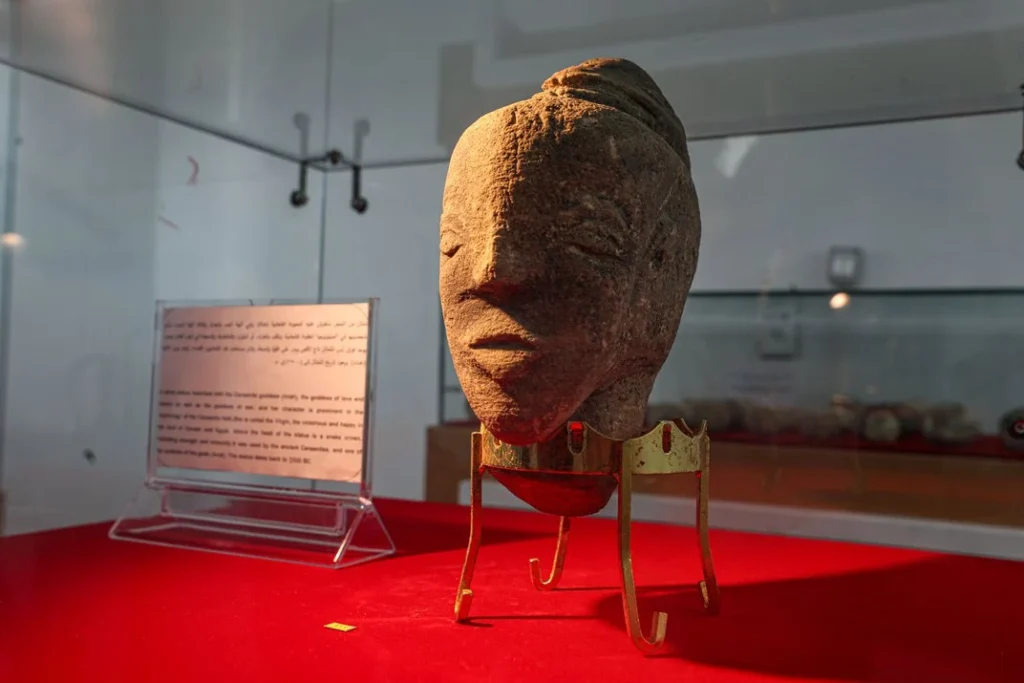Palestinian Farmer Digs Up 4,500-Year-Old Goddess Sculpture
While working his land, Nidal Abu Eid uncovered a statue of Canaanite deity Anat

Nidal Abu Eid was cultivating his land in the Gaza Strip’s Khan Younis when he came across a sculpture of a head wearing a snake tiara.
“It was muddy but when I washed it with water, I realized that it is a precious thing,” he told The New Arab. “At first, I hoped to sell it to someone to make some money, but an archaeologist told me that it was of great archaeological value.”
The Canaanites were pagans who once lived along an important trade route in an area now known as the Gaza Strip. A key location when it came to trade between countries and empires in ancient times, the region is rife with archaeological sites, some connected to the royal families of ancient civilizations.
Anat, also known as Anath, was one of the most popular Canaanite goddesses. She was known for her violent temperament and role in the myth of Baal, in which she helped rescue him from the underworld.
The unearthed limestone sculpture depicts Anat wearing a serpent crown, which was worn by gods as a sign of strength and resilience.
At a press conference, Jamal Abu Rida, director of the Ministry of Tourism and Antiquities in Gaza, used the age of the 4,500-year-old artwork and its connection with the Canaanites to argue for Palestinian sovereignty over the Gaza Strip, per the BBC’s Yolande Knell. The ministry is run by Hamas, the Palestinian nationalist, militant group that governs the Gaza Strip.
“Such discoveries prove that Palestine has civilization and history,” said Abu Rida, per the BBC.

Given its long history and connections to Judaism, Islam and Christianity, the area is rich in archaeological discoveries. In February, for instance, construction workers in northern Gaza found more than 24 tombs pertaining to a 2,000-year-old Roman cemetery.
At the time, Abu Rida told Al Jazeera’s Maram Humaid that “deteriorating conditions” on the Gaza Strip meant little funding for archaeological digs and historical preservation.
Hamas has been criticized in the past for how it deals with antiquities and archaeological sites. “Politics have long complicated archaeological work” in Gaza, Fares Akram reported for the Associated Press (AP) in 2017.
Hamas’ decision to destroy Tel Es-Sakan is among those controversies. The Bronze-Age Canaanite city, home to a longstanding archaeological excavation, was razed in favor of military bases and other construction projects. In 2022, Abu Rida told the AP that though the city was a protected archaeological site, his ministry “could not stop the more powerful Land Authority” from destroying it.
Gaza and the West Bank, when collectively referred to as Palestine, are not a United Nations member state, but are a member of Unesco, the U.N.’s cultural arm.
They are home to three official World Heritage sites, including the Church of the Nativity and pilgrimage route in Bethlehem; the West Bank city said to be the birthplace of Jesus; and the cultural landscape of Southern Jerusalem.
Currently, tourism in Gaza is heavily restricted due to an Israeli blockade inflicted in 2007 when Hamas seized the territory.
